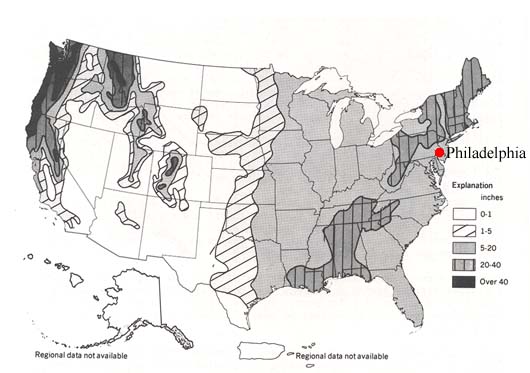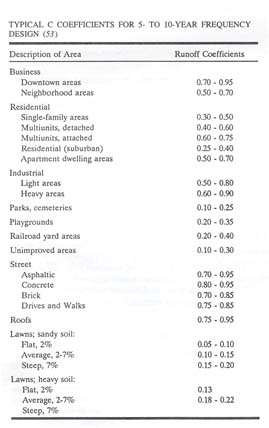| RUNOFF |
||
| Under almost all
situations, rainfall results in some amount of runoff. Any water that cannot
immediately seep into the ground flows downslope as runoff. Ground permeability
effects runoff significantly. Hard packed clay soils might
absorb very little water, a loose sand might absorb almost all the precipitation that
falls onto it, resulting in almost no runoff at all. Where there is very little rain, as in much of the Western United States, there is very little runoff. In general, the amount of runoff is related to the amount of rain a region experiences. However, urban and rural areas experience the effects of runoff very differently. The presence of vegetative cover slows the journey of raindrops from sky to soil and reduces the amount of runoff. Impermeable surfaces, such as concrete, absorb almost no water at all. The management of storm runoff is a significant issue in cities, especially when considering the destructive power of raging water. |
Average Annual Runoff in the United States * Soil, Water, and Related Resources in the United States. p192.
|
|
| The Rational Equation is
used to calculate amounts of storm water runoff. The runoff coefficient is calculated based on the permeability of the ground surface condition. |
Q=CIA Q = peak runoff rate C = runoff coefficient I = rainfall intensity A = drainage area (acres)2 |
|
| Note that the C value for
unimproved areas (forests, native meadows) is very low, almost all the water is absorbed. The C value for downtown areas containing a lot of asphalt, concrete, and roof surfaces is very close to 1.0, which means almost all of the water runs off these surfaces. Impermeable urban areas can create huge volumes of stormwater runoff. |
* Stormwater Management for Transportation Facilities. p 17. |
|
|
|
REFERENCES
|


